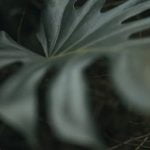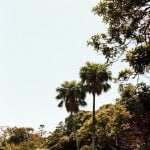Are you looking to add a touch of tranquility and beauty to your small garden? Garden pond ideas for small gardens are a great way to enhance your outdoor space and create a peaceful oasis right in your backyard. In this article, we will explore the importance and benefits of having a garden pond in a small garden, as well as provide tips and creative ideas for designing, maintaining, and adding wildlife to your own little water feature.
When it comes to small gardens, every inch of space is valuable. A well-designed garden pond can not only add aesthetic appeal but also provide environmental benefits such as attracting beneficial wildlife like birds, butterflies, and bees. The soothing sound of running water can also help mask unwanted noise from neighboring properties or busy streets. Additionally, a small garden pond can contribute to the overall health of your garden by providing a source of water for plants and wildlife.
In this section, we will delve into the various aspects of creating and maintaining a garden pond in a small space. From choosing the right spot and ensuring proper proportions to selecting the best water plants and adding life with fish and wildlife, we will cover everything you need to know about incorporating a beautiful pond into your small garden oasis.
Whether you prefer a natural, modern, or formal design, there are plenty of options that can suit any style or budget. Let’s explore the world of garden ponds for small gardens.
Size and Placement
When it comes to adding a pond to a small garden, the size and placement are crucial factors to consider. A well-placed pond can become the focal point of your outdoor space, providing a tranquil oasis and enhancing the overall aesthetic of your garden. Before you start digging, take the time to carefully plan where your pond will be located and ensure that its size is proportionate to your small garden.
Choosing the Right Spot
Before deciding on the location for your garden pond, take note of any existing features in your garden such as trees, shrubs, or flower beds. Look for a spot that receives ample sunlight for at least half the day to support aquatic plant life and minimize potential issues with algae growth. Avoid placing your pond directly under overhanging branches or near dense foliage, as this can lead to an accumulation of debris and leaf litter in the water.
Ensuring Proper Proportions
In small gardens, it’s important to maintain balance and harmony between the pond and surrounding elements. The size of your pond should complement the scale of your garden without overpowering it. Consider using a flexible liner to create custom shapes that fit seamlessly into compact spaces. A shallow, small-scale pond may be more suitable for a tiny backyard, while a narrower, winding design can add visual interest without taking up too much space.
Garden Pond Ideas for Small Gardens
When planning the size and placement of your garden pond in a small space, keep in mind that less can often be more impactful. Incorporating miniature water features like container ponds or tabletop fountains can offer all the charm of a traditional garden pond on a smaller scale. By carefully considering these factors when choosing the right spot and ensuring proper proportions for your small garden pond, you can create a beautiful and harmonious addition to your outdoor sanctuary.
Design and Style
When it comes to creating a garden pond in a small space, there are plenty of creative ideas to consider. One popular option is the natural pond design, which focuses on using natural materials such as rocks and native plants to create a more organic look. This type of design can make a small garden feel like a tranquil oasis and attract wildlife such as birds, butterflies, and beneficial insects.
For those with a more modern aesthetic, a sleek and minimalist pond design might be the perfect fit for their small garden. This style often incorporates geometric shapes, clean lines, and contemporary materials like concrete or metal. A modern garden pond can add a touch of elegance to a small outdoor space and create a striking focal point.
On the other hand, if you prefer a more formal look, consider incorporating symmetrical shapes and traditional features into your small garden pond design. This could include adding ornate water fountains or statues, as well as using structured hedges or topiaries to frame the pond area. A formal garden pond design can lend a sense of sophistication and refinement to even the smallest of gardens.
Regardless of the style you choose for your small garden pond, it’s important to consider how it will complement the overall look and feel of your outdoor space. By selecting the right design elements and incorporating them thoughtfully, you can transform even the tiniest garden into a peaceful retreat.
| Small Garden Pond Design | Description |
|---|---|
| Natural | Uses natural materials like rocks and native plants for an organic look |
| Modern | Incorporates sleek lines and contemporary materials for a minimalist aesthetic |
| Formal | Features symmetrical shapes and traditional elements for an elegant appearance |
Plant Selection
When it comes to creating a small garden pond, choosing the right water plants is essential for achieving a beautiful and balanced ecosystem. Whether you want to add some visual interest, improve water quality, or provide habitat for wildlife, incorporating floating, submerged, and marginal plants can be a great addition to your garden pond. Here are some of the best water plants to consider for your small garden pond:
- Floating Plants: Water lettuce, water hyacinth, and duckweed are popular choices for adding surface coverage and reducing algae growth in small garden ponds.
- Submerged Plants: Anacharis, hornwort, and waterweed are excellent options for oxygenating the water and providing hiding places for fish and other aquatic creatures.
- Marginal Plants: Cattails, iris, and pickerelweed are ideal for adding vertical interest around the edges of your small garden pond while also helping to filter out excess nutrients from the water.
Incorporating a combination of these different types of water plants can help create a balanced and visually appealing aquatic environment in your small garden pond. Additionally, consider the size of your pond when selecting plants to ensure they won’t overcrowd the space. With careful planning and selection, you can create a thriving ecosystem that enhances the beauty of your small garden.
In addition to aesthetics, these water plants play a crucial role in maintaining the overall health of your small garden pond by contributing to its natural balance. They not only provide oxygenation but also help in reducing nutrient levels by absorbing excess nutrients from the water. This helps prevent algae blooms and keeps the water clear and healthy for any fish or wildlife that may inhabit it.
By carefully choosing a variety of floating, submerged, and marginal plants for your small garden pond, you can create an attractive and functional ecosystem that enhances the overall appeal of your outdoor space while providing numerous environmental benefits.
Maintenance Tips
Maintaining a small garden pond is crucial to ensure its longevity and the health of any living creatures within it. Regular maintenance not only keeps the pond clean but also promotes a balanced ecosystem, making it an enjoyable feature in your small garden. Here are some essential tips for keeping your small garden pond clean and healthy:
First and foremost, it’s important to regularly remove debris such as fallen leaves, twigs, and any other organic matter that may find its way into the pond. This can be done using a skimmer net or a pond vacuum, depending on the size of your pond. Accumulated debris can decompose and release harmful substances into the water, upsetting the balance of the ecosystem.
Another key aspect of maintaining a small garden pond is ensuring proper filtration. Installing an appropriate filter system will help to remove excess nutrients, waste, and algae from the water, keeping it clear and safe for any fish or wildlife that may inhabit the pond. There are various types of filters available, so it’s important to choose one that suits the size and specific needs of your pond.
Regular water testing is also essential in maintaining a healthy environment for your small garden pond. Monitoring parameters such as pH levels, ammonia, nitrites, and nitrates will help you identify any imbalances or potential issues early on. By taking proactive measures based on these test results, you can prevent problems before they escalate.
Lastly, promoting oxygenation is vital for the overall health of your small garden pond. This can be achieved through the use of oxygenating plants or adding fountains or waterfalls that aerate the water. Adequate oxygen levels support beneficial bacteria growth and create a hospitable environment for fish and other aquatic life.
| Maintenance Tips | Data |
|---|---|
| Debris Removal | Regularly remove leaves, twigs, and organic matter from the pond |
| Filtration | Install an appropriate filter system to remove excess nutrients and waste |
| Water Testing | Regularly monitor pH levels, ammonia, nitrites, nitrates to identify imbalances |
| Oxygenation | Promote oxygenation through plants or water features to support aquatic life |
Wildlife and Fish
Adding wildlife and fish to your small garden pond can create a thriving ecosystem and add a unique touch to your outdoor space. By introducing fish, frogs, and attracting wildlife, you can enhance the overall appeal of your pond while also promoting a healthy environment for plants and other aquatic life.
Introducing Fish
When it comes to choosing fish for your small garden pond, it’s important to consider the size of your pond and the specific needs of the fish species. Colorful koi and goldfish are popular choices for smaller ponds due to their ability to thrive in confined spaces. Additionally, these fish are known for their tranquil swimming patterns and beautiful colors which can further enhance the aesthetics of your pond.
Attracting Wildlife
Attracting wildlife to your garden pond can create a natural and dynamic environment. One way to do this is by incorporating a variety of plants around the perimeter of the pond that provide cover and food sources for local wildlife. Additionally, providing nesting sites such as rock piles or log piles can attract amphibians, birds, and other small animals to visit or even set up residence in your garden.
Frogs and Amphibians
Frogs not only add charm to a small garden pond but also help control pests by feeding on insects such as mosquitoes. Creating a welcoming habitat for frogs involves providing areas with dense vegetation along with shallow water where they can lay their eggs. By including rocks or submerged logs in or around the edge of the pond, you provide basking spots for frogs while also adding visual interest to your pond design.
By taking these steps to introduce fish, attract wildlife, and encourage frogs in your small garden pond, you can establish a diverse and lively aquatic environment right in your backyard. These additions will not only bring beauty and interest but will contribute to the overall health and balance of your small garden pond ecosystem.
Water Features
Adding water features to your small garden pond can greatly enhance its aesthetic appeal and create a soothing atmosphere. Whether you choose to incorporate a fountain, waterfall, or lighting, there are numerous options to elevate the beauty of your pond. Here are some ideas for incorporating these elements into your small garden pond:
- Fountains: A fountain can add movement and sound to your pond, creating a peaceful ambiance. Consider a small tiered fountain for a classic look, or opt for a modern bubbling fountain for a contemporary touch.
- Waterfalls: Adding a waterfall to your small garden pond not only adds visual interest but also helps with oxygenation. You can create a natural-looking cascade with rocks and plants, or opt for a sleek and modern waterfall feature.
- Lighting: With the right lighting, you can enjoy your small garden pond even after the sun goes down. Submersible LED lights can illuminate the water from within, while spotlights around the pond can highlight its beauty from the outside.
These water features can be customized to suit the style and size of your small garden pond. Whether you prefer a tranquil and natural look or something more contemporary and eye-catching, there are options available to fit your preferences.
Incorporating fountains, waterfalls, or lighting into your small garden pond does not have to break the bank. There are plenty of budget-friendly options available for adding these features, such as DIY fountain kits, solar-powered lighting, and simple waterfall designs that can be created with basic supplies. With some creativity and resourcefulness, you can enhance your small garden pond without exceeding your budget.
Overall, adding water features to your small garden pond is an excellent way to personalize and beautify your outdoor space. Whether you choose one feature or decide to incorporate all three, these additions can transform your small garden pond into a captivating focal point in your garden.
DIY and Budget-Friendly Options
In conclusion, creating a stunning garden pond in a small space doesn’t have to be expensive or complicated. Whether you opt for a natural, modern, or formal design, there are plenty of budget-friendly options to consider. From using repurposed materials to incorporating DIY elements, there are endless possibilities for bringing your small garden pond ideas to life without breaking the bank.
One of the key factors in achieving a successful small garden pond is proper maintenance. By following essential maintenance tips and keeping the pond clean and healthy, you can ensure that it remains a beautiful focal point in your garden. Additionally, selecting the right water plants and introducing fish and wildlife can further enhance the allure of your small garden pond while contributing to its ecological balance.
Lastly, don’t underestimate the impact of water features on your small garden pond. Adding fountains, waterfalls, and lighting can elevate the ambiance of your outdoor space while maximizing the visual appeal of your pond.
With some creativity and resourcefulness, you can create a captivating oasis in your small garden that reflects your personal style and brings joy to both you and any visitors who come by. With these budget-friendly garden pond ideas for small gardens in mind, get ready to embark on an exciting journey towards transforming your outdoor space into a tranquil haven.
Frequently Asked Questions
What Is the Cheapest Way to Make a Pond?
The cheapest way to make a pond is by using a prefabricated pond liner, which can be purchased at a relatively low cost. You can dig the shape and size you want, install the liner, and fill it with water.
How Do I Build a Small Garden Pond?
Building a small garden pond involves several steps. You will need to start by choosing a suitable location, digging the pond to your desired size and shape, installing the pond liner, adding rocks or plants for decoration, and finally filling it with water.
How Do You Keep a Small Garden Pond Clean?
Keeping a small garden pond clean requires regular maintenance. This includes removing debris like leaves and twigs, skimming the surface to remove any floating debris, checking the pump and filter regularly, and occasionally doing a partial water change to keep it fresh and clean. Regular maintenance will help prevent algae and keep your pond healthy for fish or plants.

Welcome to my gardening blog! I am passionate about plants and enjoy sharing my knowledge and experiences with others. In this blog, I will write about everything related to gardening, from tips on how to get started to updates on my own garden projects.





